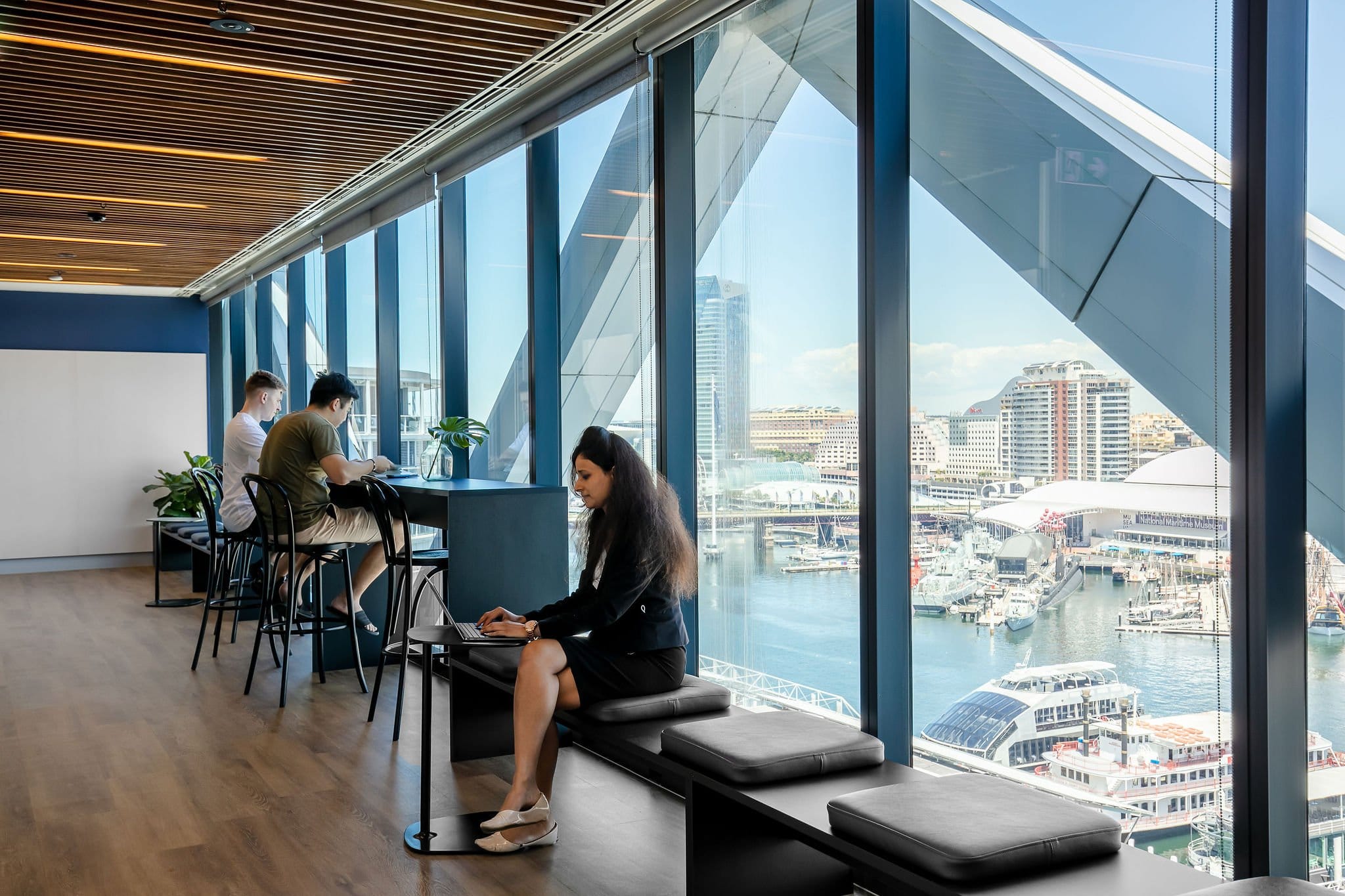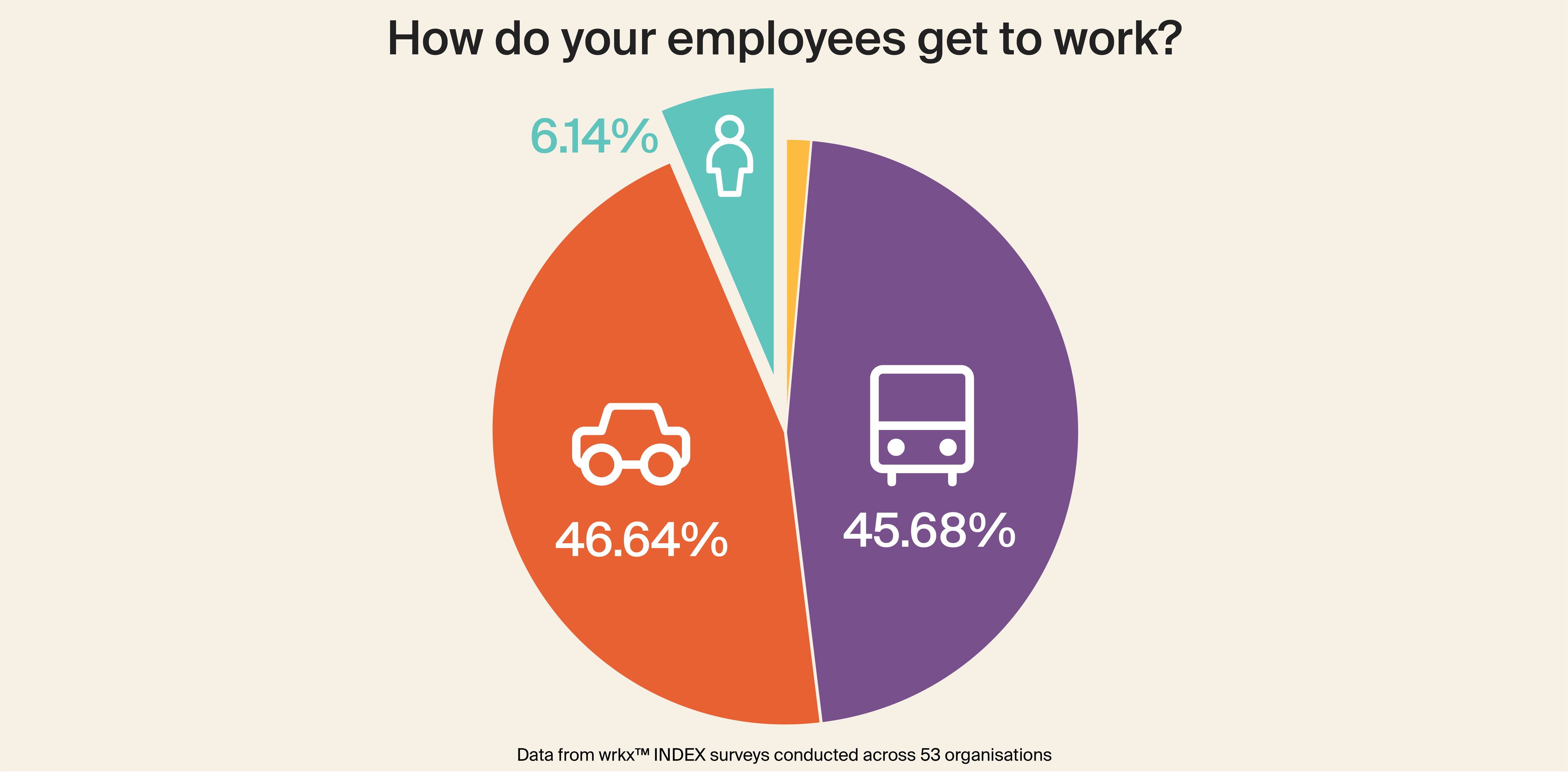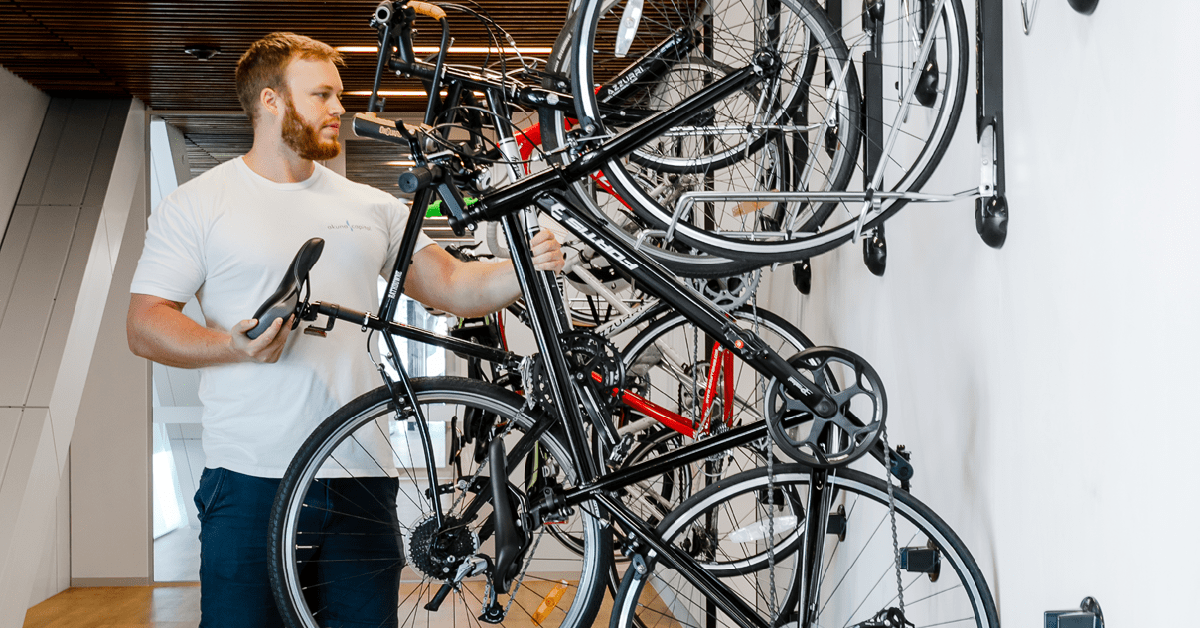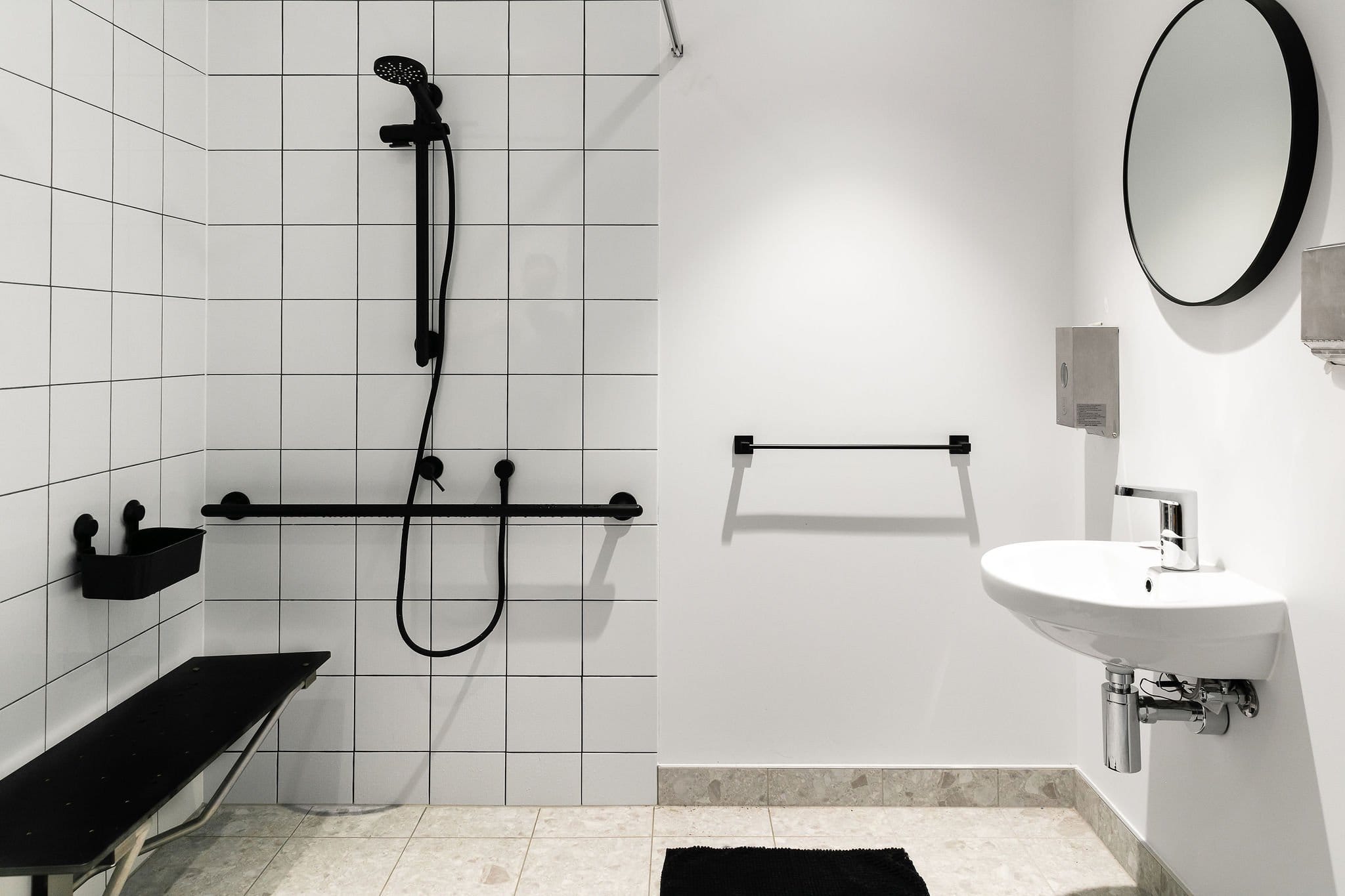
Successful leaders know how their people commute. This is why.

Do you know how your employees get to work? Attitudes towards the commute have shifted. While employees are reconsidering the time and money it costs for them to get to the office, businesses must also be considering the role of the commute.
Progressive business leaders are not mandating employees’ days in the office. They know they will achieve better workplace culture and employee engagement by enticing employees with a destination workplace. Using employee consultation and data to highlight what employees need from their workplace, businesses are now focused on ‘earning the commute’.
But the benefits of enticing employees back to the office is only the beginning. By considering the commute when choosing the right location for your workplace, you can promote sustainability and employee wellness and wellbeing. Doing so can bolster your brand reputation, support employee attraction and retention, and improve productivity.
Earning the commute
In 2019, Australians were commuting an average of 48 minutes a day. The commute was much longer in the larger cities. Sydney had the longest average commute at 71 minutes, closely followed by Melbourne and Brisbane. This commute was an expected part of employees’ days.
However, since the widespread adoption of working from home in 2020, attitudes towards the commute have changed. Bendelta’s Worksona™ data shows the number one motivation to work from home is to save time on the commute. Axiom’s own wrkx™ INDEX survey has found similar results. Commuting to the office every day is no longer an assumption. To entice people back into the office, businesses now need to provide benefits in the office that their employees could not get when working from home. Businesses need to ‘earn the commute’.

Before you analyse how your employees commute, do you know why they commute?
A global survey conducted by McKinsey & Company detailed the top reasons people left their jobs between April 2021 and April 2022. Many of the reasons were related to workplace culture. From feeling unsupported by leadership and peers, to not having the correct resources to do their work, it is clear employees need a workplace where they can thrive.
Every workplace should be inspiring and supportive, where employees feel they are making a meaningful contribution to the business. But people are also looking for workplaces that go above and beyond supporting their daily duties. They want to come to a space that encourages social connection and community building and a place that supports their wellness and wellbeing.
Conducting employee consultations through an anonymous survey will help you understand what your employees need from their workplace and how to ‘earn the commute’. Providing extra value in your workplace can help to retain your current staff as well as attract new top talent. Attracting employees back into an engaging space will have a positive impact on your business performance and culture.
Reducing commute-related greenhouse gas emissions
Workplace expectations are changing. An increasing number of employees are valuing ESG performance from their employers. Our wrkx™ INDEX platform surveyed more than 6600 people across 53 organisations and found 84.21% believe it is at least ‘moderately important’ that their workplace aligns with their personal values on environmental impacts and green practices.

Our data shows 46.64% of respondents’ primary mode of transport for their commute is driving. Light vehicles account for 10% of Australia’s total greenhouse gas emissions but a 2021 study published in the Transportation Research Journal found employees could decrease greenhouse gas emissions from their commute by 84% by cycling to work instead of driving.
The reality of living in large cities is that walking or cycling is not always possible for employees. The next best option for a greener commute is public transport. Trains, trams and buses account for less than 5% of Australia’s greenhouse gas emissions, a vast improvement from driving.
Businesses have an opportunity to positively impact Australia’s climate change and sustainability efforts, and bolster their brand reputation and staff retention in the process.
For those employees who need to drive to work, there are other ways to encourage them to reduce their greenhouse gas emissions. In the UK, salary sacrifice schemes are driving the adoption of electric vehicles. For employees who drive to work, offering salary sacrifice for electric vehicles could greatly reduce their greenhouse gas emissions. And with electric vehicles in Australia expected to become more affordable soon, with the passing of amendments to the Fringe Benefits Tax Assessment Act 1986, businesses can capitalise on this by introducing a salary sacrifice scheme.
Signal to your employees that you care about the environment as much as they do by encouraging them to choose greener commuting options and providing education on the positive difference you can all make as a community. Doing so could have a positive impact on your ESG performance and brand reputation, as well as improving employee retention.
Improving employee wellness and wellbeing through the commute
Businesses are focusing more on their employees’ wellness and wellbeing. Looking after employees’ health can result in fewer sick days, resignations, and accidents. It can also result in higher employee engagement which has been linked to higher profit margins than businesses with less engaged employees.
Businesses should focus on wellness and wellbeing throughout their employees’ days, and this begins with their commute.
How your employees get to work can have a significant impact on their health. Only 6.14% of people surveyed through our wrkx™ INDEX tool commute by active transport (walking, running, jogging or cycling) as their primary mode of transport. This is not surprising when three quarters of respondents commute more than 8km.

Walking or cycling to work has a range of benefits for employees’ physical health which can contribute to prolonging and improving their quality of life. The benefits can be felt through the whole body, improving cardiovascular and pulmonary fitness, reducing risk of stroke and heart disease, managing blood pressure and cholesterol levels, and strengthening joints, bones, and muscles. It also can reduce stress, improve mood, and help to manage anxiety and depression. This, in turn, can improve employees’ productivity and performance at work.
And employees don’t need to walk or cycle their whole commute. Using public transport will result in more walking or cycling time than if they drive to work. For some employees this extra physical activity could be the key to meeting their recommended weekly exercise requirements.
Enabling employees to choose active transport for their commute may require education. Offering resources, workshops, or incentives can help employees understand the health benefits of active transport. Celebrating and encouraging them to choose the healthiest transport available to them will help them to stay motivated to do so.
Supporting the commute
As well as earning the commute, businesses should support the commute. Consider the points of your employees’ journeys where they make the decision to work from home or commute to the office.
Consider choosing a location that is within walking or cycling distance of current employees’ homes, close to public transport, and central to other opportunities your employees need. Choosing a workplace in a CBD or business hub will allow employees to attend networking opportunities, conferences and other professional opportunities throughout their day and easily return to the office afterwards. Proximity to gyms, childcare and supermarkets may also be deciding factors in whether your employees come to the office or work from home.
It is also important to find a building that supports your employees in their chosen mode of transport. Providing secure bike storage, bathrooms equipped with showers and fresh towels, lockers to store their belongings, or even a concierge service will make walking, cycling and public transport more desirable options.
And for those who need to drive to the office, offering free parking within the building, or close by, can remove friction in their morning, making the office a more enticing place to be. Offering flexible hours will allow employees to travel outside of peak times, making their drive easier. You can also consider reimbursing road tolls. To encourage employees to choose greener driving options, provide EV charging stations and facilitate a carpool with employees who travel long distances to the office. This will help them save money on commuting costs while reducing their commute-related greenhouse gas emissions.

Employee attitudes towards the commute have shifted dramatically and businesses are evolving to meet and exceed employee expectations. To remain competitive in attracting and retaining employees, improve ESG performance and bolster brand reputation, businesses must consider how their employees get to work and how the right workplace can support and earn their commute.
To choose the best building and location for your business, you must consider your employees’ commute. A data-led workplace strategy can help you do this. During the research phase of the workplace strategy process, our strategists gather data and insights using our unique wrkx™ suite of tools to help you make the best decisions for your employees and your business.
If you would like to know more about how we can help you build an effective, people-centred workplace strategy that aligns with your business goals, contact us.




